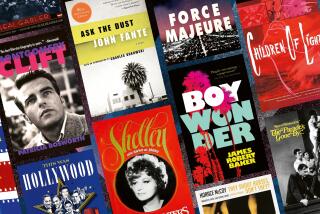APPRECIATIONS : Lillian Gish: An Artist Who Shaped Art of Film
During the presidency of Jimmy Carter, Lillian Gish was invited to the White House for a reception marking the 10th anniversary of the American Film Institute. After the brief ceremony, Gish stood in the ornate Red Room talking with friends. She looked around and said: “I’ve been in this room before. Mr. Griffith and I came here to meet President Harding.”
It was an astonishing remark, and another reminder of just how much of the whole life of the motion pictures the Gish career had spanned even then. She was not quite as old as the movies when she died on Sunday at the age of 96; the movies are a century old more or less, depending on which event one uses as a start-date.
But Gish had lived the whole development of the motion picture as an art-form, from the crudest one-reelers when her Mr. Griffith--David Wark Griffith--was first beginning to perfect the language of filmmaking, to the “The Whales of August” in wide-screen color and stereophonic sound in 1987, when she was already past 90.
Longevity is its own kind of miracle with its particular brand of fascination. Thinking of Gish, it is impossible not to think as well of the commonplaces, from radio and television to the ballpoint pen, that came in her lifetime, let alone men on the moon and a space probe escaping the solar system and sailing on into interstellar space.
It is inconceivable that an actress of another generation will be able to know quite the life in art that Gish knew, born in a trunk and trouping at 5, inventing (in a sense) the art of screen acting even as her mentor Griffith was demonstrating all the things that could be done with the camera and in the cutting room.
No present actress would likely be asked to do--or be agreeable to doing--the life-endangering stunts that Gish did herself, most unforgettably crossing the ice floe in “Way Down East,” a sequence that is difficult, if thrilling, to watch even now.
Perhaps nothing was more notable about her long career than that she survived and conquered not only the movies’ shift from silence to sound (which stopped many a career in its tracks) but prospered throughout the advancing of her own years--an inevitable process that has ended many an acting career, for women more cruelly than for men.
Had she been only a film actress, maturity might have been a problem for her too. But she was an actress for all venues and when Hollywood--which for all practical purposes invented the cult of youth and perpetuates it still--looked askance, Gish went to the theater, where the quality of performance triumphs over all. In her 30s she could play a still-youthful Ophelia to John Gielgud’s Hamlet.
Sadly, too few of her silent films are easily accessible for viewing, so that Gish at the peak of her powers and originality has been for later generations a name and a legend more than a presence, and the later work in supporting roles, as in Robert Altman’s “The Wedding” is admirable without being indelible. Longevity has its penalties as well as its rewards.
But her passing is a reminder that even now we have been in the presence of the women as well as the men who made the movies, whose star power seized and held the loyalty of audiences and who demonstrated, sometimes with great courage as in the case of Gish, what the motion picture form could hope to do and be and make us feel as well as see.
There is a Lillian Gish legacy, and it is not only in the work she did, but also in the kinds of films and quality of performances that were inspired by the achievements of Gish and President Harding’s other caller.
More to Read
Only good movies
Get the Indie Focus newsletter, Mark Olsen's weekly guide to the world of cinema.
You may occasionally receive promotional content from the Los Angeles Times.










